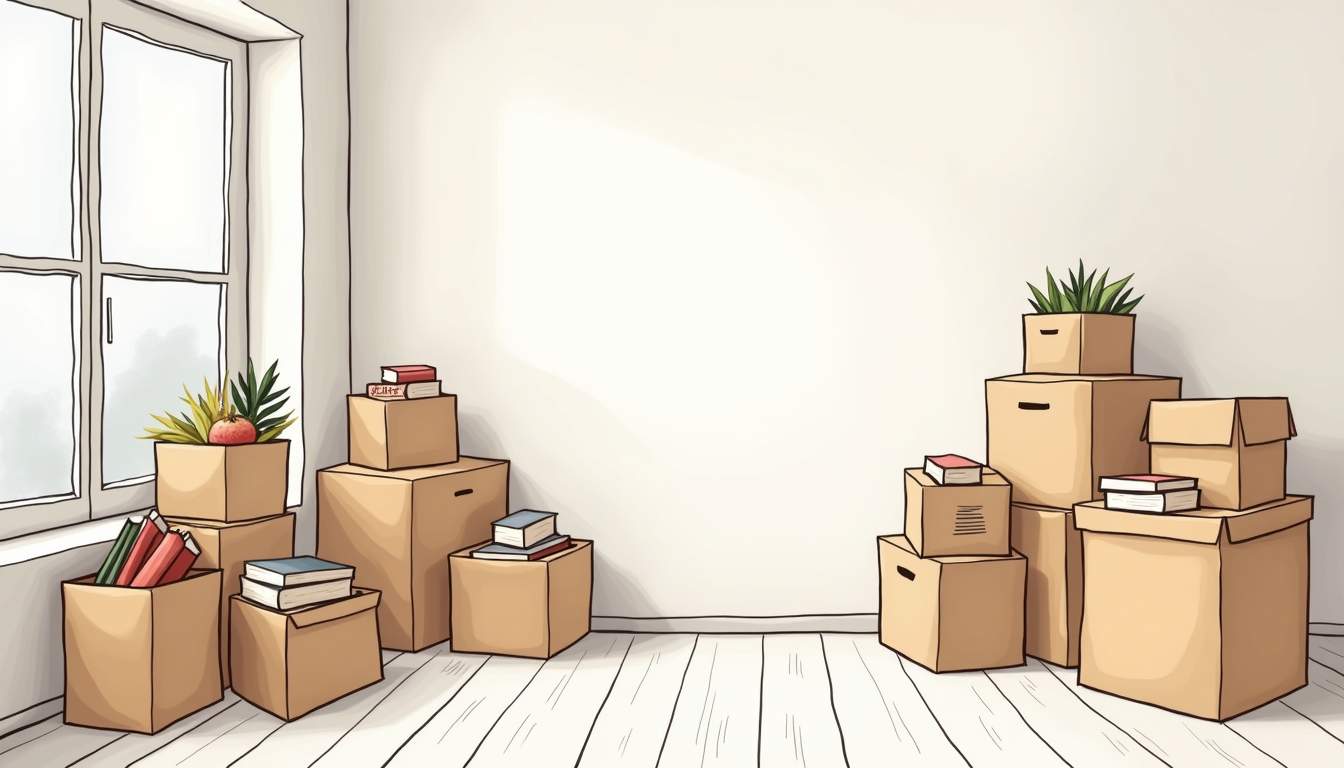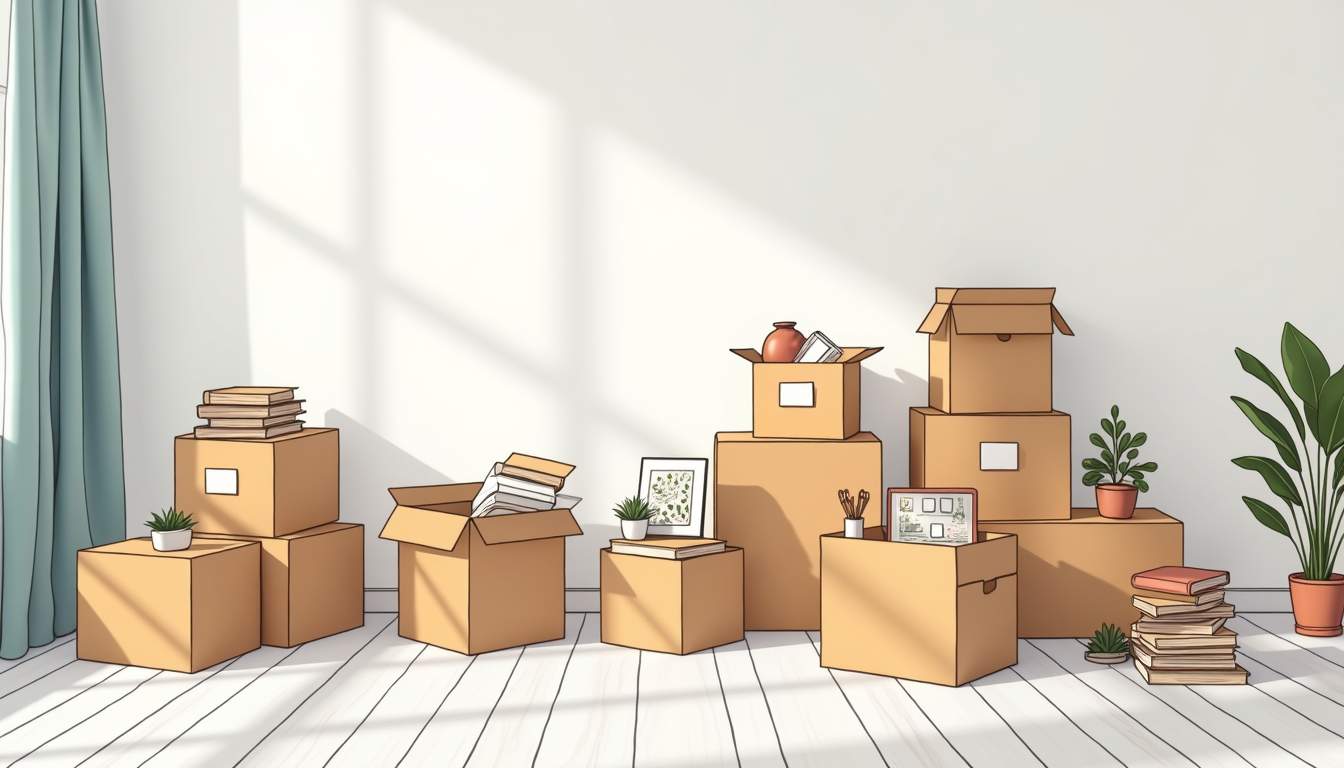
Moving day is chaotic enough without having to dig through a mountain of unlabeled boxes to find your toothbrush. Unpacking can quickly turn into a frustrating scavenger hunt if your boxes aren’t organized properly. But with a little planning and some smart strategies, you can make unpacking smooth, fast, and even a little satisfying.
Start with a Clear Labeling System
Labels are your best friend when it comes to unpacking. Without clear labels, boxes become mysterious black holes, forcing you to open everything just to find one item. A simple, consistent labeling system saves time and spares frustration.
Use Big, Bold Labels
Write the contents of each box in large, easy-to-read letters. Avoid tiny handwriting or vague descriptions like “miscellaneous.” Instead, be specific: “Kitchen – Pots and Pans,” “Bedroom – Bedding,” or “Bathroom – Towels.” This clarity helps you quickly identify what’s inside without opening the box. Additionally, consider using a permanent marker or a label maker for a professional touch that stands out. The more organized your labeling, the smoother your unpacking experience will be, allowing you to settle into your new space with ease.
Color-Code by Room
Assign a color to each room in your new home. Use colored markers, stickers, or tape to mark boxes accordingly. For example, blue for the bathroom, green for the kitchen, red for the living room. This visual cue makes it easy to sort boxes as they arrive and directs movers where to place them. Not only does this system speed up the unpacking process, but it also adds a fun, creative element to your move. You can even create a color-coded chart to hang on the wall, providing a quick reference for anyone helping you unpack. For reliable assistance during your move, consider checking out Cheap Movers Singapore at the following link: https://www.cheapmoverssingapore.com/
Number Your Boxes
Numbering boxes might sound tedious, but it’s a game-changer. Keep a master list that matches box numbers to their contents and room destination. This list becomes your unpacking roadmap, letting you prioritize which boxes to open first and track what’s been unpacked. For added efficiency, consider using a spreadsheet or a mobile app to keep this list organized. You can even take photos of the contents of each box to have a visual reference, making it even easier to locate specific items without rifling through multiple boxes.
Consider Using Inventory Tags
In addition to your labeling system, using inventory tags can further streamline your unpacking process. These tags can be attached to each box and include detailed information about the contents, condition, and even the priority level for unpacking. This method is especially useful for larger moves or if you have items that require special handling. By having a clear inventory, you can ensure that nothing gets lost in the chaos of unpacking and that all your essentials are easily accessible when you need them most.
Involve the Whole Family
Making unpacking a family affair can also help create a sense of excitement around your new home. Involve everyone in the labeling process, allowing kids to decorate their boxes with stickers or drawings that represent their belongings. This not only makes the task more enjoyable but also helps children feel a sense of ownership in their new space. By working together, you can turn what might be a tedious chore into a fun bonding experience, making the transition to your new home smoother and more memorable.
Pack Strategically for Easy Access
How you pack your boxes affects how quickly you can unpack. Think about what you’ll need right away and pack those items separately. This prevents endless digging through boxes for essentials. Additionally, consider the layout of your new space; knowing where your furniture will go can help you prioritize which boxes to unpack first, making the transition smoother and more efficient.

Pack an Essentials Box
Before the move, pack a box or two with everything you’ll need in the first 24 to 48 hours. Include toiletries, a change of clothes, basic kitchen supplies like coffee mugs and utensils, phone chargers, medications, and important documents. Keep this box accessible during the move so it’s the first one you open. It can also be helpful to include a few comfort items, such as a favorite book or a small toy for children, to help everyone adjust to the new environment more easily.
Group Similar Items Together
Don’t mix kitchen gadgets with bedroom linens or bathroom supplies with office materials. Grouping similar items not only helps with labeling but also speeds up the unpacking process. When you’re ready to set up a room, you can focus on unpacking just those related boxes. Consider using color-coded labels for each room or category, which can make it even easier to identify where each box belongs at a glance. This small organizational step can save you time and reduce stress as you settle into your new home.
Pack Heavy Items at the Bottom
Place heavier items at the bottom of the box and lighter ones on top. This keeps boxes sturdy and prevents fragile items from getting crushed. It also makes it easier to stack boxes without worrying about damage. Additionally, be mindful of the weight of each box; try to keep them manageable so that lifting and moving them doesn’t lead to injury. If you have particularly heavy items like books or tools, consider using smaller boxes to distribute the weight more evenly, making the overall moving process less daunting.
Organize Boxes by Room and Priority
When moving into a new space, not all rooms are unpacked at the same pace. Prioritizing boxes by room and importance can help you settle in faster.
Sort Boxes by Destination Room
Before loading the moving truck, group boxes by the room they belong to. Label each group clearly. When you arrive, direct movers to place boxes in their respective rooms. This saves time and effort because you won’t have to carry boxes through the house multiple times.
Unpack High-Priority Rooms First
Focus on rooms you’ll use immediately, like the kitchen and bedroom. Unpack boxes related to these spaces first so you can cook meals and sleep comfortably. Other areas like the garage or guest room can wait until later.
Create a Staging Area
If possible, designate a spot in your new home as a staging area for boxes that aren’t ready to be unpacked. This keeps clutter contained and prevents boxes from spreading all over your living space.
Use Technology to Stay Organized
Moving is a lot to juggle. Technology can help keep your packing and unpacking process organized and stress-free.
Take Photos of Box Contents
Snap pictures of what’s inside each box before sealing it. This visual inventory makes it easy to remember what’s packed where without flipping through your master list. When you’re looking for something specific, you can quickly check your photos instead of opening multiple boxes.
Use Inventory Apps
There are several apps designed to help with moving and organization. These apps allow you to create digital inventories, label boxes, and track what’s been unpacked. Some even let you assign boxes to specific rooms and add notes about fragile items or special handling instructions.
Share Your Plan
If you’re moving with family or roommates, share your labeling system and inventory with everyone involved. This ensures everyone knows where things are and can help unpack efficiently. Communication reduces confusion and speeds up the settling-in process.
Handle Fragile and Specialty Items with Care
Fragile items and specialty belongings need extra attention during packing and unpacking. Organizing these boxes properly prevents damage and saves you from headaches later.

Use Clear Labels for Fragile Items
Mark boxes containing fragile items with bright “Fragile” stickers or bold writing. Indicate which side should face up to avoid mishandling. This alerts movers and anyone helping you to handle these boxes gently.
Pack Specialty Items Separately
Items like artwork, electronics, or musical instruments require special packing materials and handling. Use bubble wrap, foam, or custom boxes for these belongings and keep them separate from general household boxes. Label them clearly and consider unpacking these items yourself to ensure they’re handled properly.
Prepare a Repair Kit
Keep a small kit handy with tape, scissors, markers, and bubble wrap. This allows you to reinforce boxes or rewrap fragile items quickly if needed during the move or unpacking.
Maintain Order During Unpacking
Once the boxes arrive, it’s tempting to just start ripping through them. But maintaining order during unpacking makes the process less overwhelming and helps you settle in faster.
Unpack One Room at a Time
Focus on completing one room before moving to the next. This approach prevents your new home from becoming a chaotic jumble of half-unpacked boxes. It also gives you a sense of accomplishment as you see each room come together.
Set Up Key Furniture First
Before unpacking boxes in a room, assemble or arrange the essential furniture. Having your bed, couch, or dining table set up provides a comfortable space to rest and organize your belongings.
Dispose of Packing Materials Promptly
Boxes, bubble wrap, and packing paper can pile up quickly. Break down empty boxes and recycle or dispose of packing materials as you go. This keeps your space tidy and prevents tripping hazards.
Final Tips for a Smooth Unpacking Experience
Unpacking doesn’t have to be a dreaded chore. A little preparation and organization go a long way.

- Stay hydrated and take breaks. Moving is physically demanding. Give yourself time to rest and recharge.
- Have snacks and water accessible. Keep energy levels up while you work through the boxes.
- Enlist help. Friends or family can speed up the process and make it more enjoyable.
- Be patient. It’s okay if everything isn’t unpacked in one day. Prioritize and take it step by step.
Organizing your boxes thoughtfully before and during your move sets the stage for effortless unpacking. With clear labels, strategic packing, and a solid plan, you’ll find yourself settled into your new home faster and with less stress than you ever imagined.



